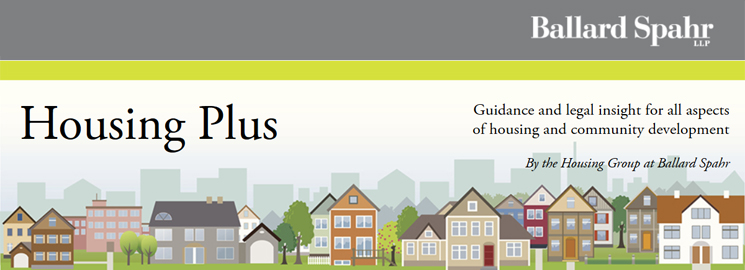
On September 28, 2016, HUD published a notice in the Federal Register to solicit comments to revised form documents used in the Rental Assistance Demonstration (“RAD”).
This notice follows a 60-day comment period on earlier draft changes to the form documents. However, noted in the notice, HUD only received six sets of public comments in response to its prior notice, and we encourage our housing partners to review the revised drafts and provide comments, as necessary, to ensure that the final set of new form documents reflect the needs of all RAD participants. Comments are due Friday, October 28.
Ballard submitted comments to the earlier drafts, and we are currently reviewing the revised drafts.
In other RAD news, HUD has released an interim report on its evaluation of RAD based on 185 projects that closed before October 2015, and we encourage you to delve into the results. In particular, HUD reports the following findings:
-
On average, for every $1 invested by the PHA in their RAD projects, private and public external sources invested an additional $8.91, creating a leverage ratio of nearly 9:1.
-
The sources of private and public external funds break down as follows: 39.4% from low-income housing tax credits (20.3% from 4% credits and 19.1% from 9% credits); 27.6% from soft funding sources (16.1% from seller financing and 11.6% from other soft sources); 22.7% from third-party debt; 10.1% from the PHA’s own resources.
-
PHA size appears to affect a project’s success at obtaining private capital with large PHAs accounting for the largest portion of financing compared with their proportion of projects and units. Large PHAs also have an outsized role in the program because their projects comprise a larger portion of RAD projects, even though they tended to select fewer projects (as a percentage of their entire portfolio) for conversion.
-
As compared to non-RAD public housing projects, RAD projects tend to have tenants with lower median household income, a greater mix of large-size units and are located in more stable areas with lower rates of poverty, greater rates of housing cost burden and high rates of overcrowding.
-
RAD projects are also more likely to have higher per-unit operating subsidies and lower-per unit expenses, which makes financing capital improvements more feasible.
We look forward to HUD’s continued evaluation of the program, including any insight into how these finding may change based on the projects that have closed in the past year.